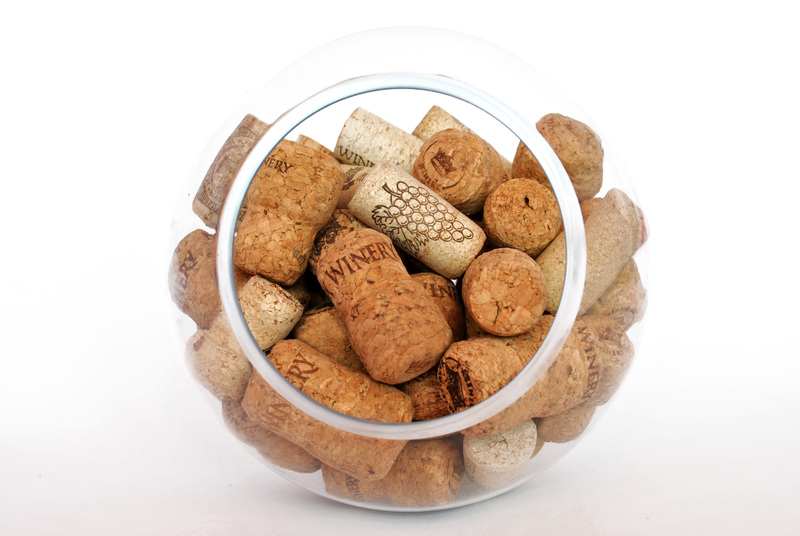Recycling Your Cookware: Pots and Pans Edition
Have you ever wondered what to do with your old or damaged pots and pans? Most households accumulate a collection of cookware over time--some with broken handles, scratched surfaces, or lost lids. Instead of tossing them into the trash, did you know there are eco-friendly ways to give your cookware a second life? In this comprehensive guide, we'll dive deep into recycling pots and pans, exploring methods, local options, and creative upcycling ideas to help you make sustainable choices.

Why Should You Recycle Cookware?
Recycling pots and pans comes with a host of environmental benefits. Traditional cookware can take hundreds of years to decompose in landfills, releasing harmful chemicals and polluting the earth. By recycling or reusing your old cookware, you help:
- Conserve natural resources by reducing the demand for raw materials.
- Minimize landfill waste, lowering overall pollution.
- Support the circular economy by extending the lifespan of materials.
- Reduce energy consumption linked to production of new cookware.
In short, eco-friendly cookware disposal is a small act with a big impact on our planet.
Types of Cookware and Their Materials
Before you head to a recycling center, it's critical to identify the material your cookware is made from. Here's a rundown of common cookware types and their recyclable components:
1. Aluminum Cookware
Aluminum is one of the most recyclable metals. Many pots, pans, and baking tins fall into this category. However, ensure that:
- The cookware is free of food residue.
- Non-metal parts like plastic handles or glass lids are removed.
- It does not have non-stick coatings, which could complicate recycling.
2. Stainless Steel Cookware
Stainless steel can be fully recycled. Most scrap yards and recycling centers accept stainless steel pots and pans, especially if the handles, knobs, and other non-metallic parts are detached. Clean items are easier to process.
3. Cast Iron Cookware
Cast iron is virtually indestructible and extremely valuable for metal recyclers. If you have cracked or severely rusted skillets or Dutch ovens, they can be taken to scrap metal recyclers. Some centers may even pay you for the material.
4. Copper Cookware
Copper has a high resale value in the scrap market. Remember to remove insulation layers or non-copper parts when possible, and contact your local metal recycler for best disposal practices.
5. Nonstick and Coated Pans
Nonstick cookware (Teflon or ceramic coated) poses a unique challenge. The coating can release harmful chemicals if not processed properly. Special recycling programs or take-back schemes from some manufacturers are your best bet for these items.
Preparing Your Pots and Pans for Recycling
Step-by-Step Guide
- Assess the condition: If possible, consider donating or upcycling still-functional cookware.
- Remove non-metal parts: Use a screwdriver or pliers to take off plastic, wood, or glass components.
- Clean thoroughly: Scrub away grease, food particles, and burnt residues.
- Sort by material: Separate aluminum, stainless steel, cast iron, and nonstick items.
Tip: Keeping items as clean and separated as possible increases the likelihood they'll be accepted at recycling centers.
Where Can You Recycle Old Cookware?
Disposing of pots and pans sustainably requires finding the right recycling facility or drop-off program. Here are some common options:
1. Scrap Metal Yards
Many scrap yards accept cookware, especially if it's made of a single metal (stainless steel, aluminum, cast iron, or copper). Check with your nearby metal recycling facility for specific requirements.
2. Curbside Recycling Programs
Some municipal recycling services allow metal cookware--but always verify guidelines. Nonstick and coated pans are usually excluded from regular recycling bins.
3. Specialty Recycling Events
Certain communities host recycling drives or hazardous waste collection events, which may accept items not allowed in curbside bins.
4. Manufacturer Take-Back Programs
Brands like TerraCycle and some cookware manufacturers run take-back or mail-in recycling programs. Check your cookware brand's website for details.
5. Donation Centers and Thrift Stores
If your pots and pans are in usable condition, donate them to local charities or thrift shops. Habitat for Humanity ReStores, Goodwill, and Salvation Army often accept secondhand kitchenware.
Creative Ways to Upcycle Old Cookware
Recycling isn't the only green solution! Get creative and transform your old pots and pans into something useful or decorative. Here are several imaginative ideas:
- Garden Planters: Turn deep pots into quirky flowerpots or herb gardens--drill drainage holes if needed.
- Wall Art: Spray-paint old pans and display them in a kitchen-themed wall collage.
- Serving Trays: Paint baking trays or shallow pans and use as serving platters or organizing trays.
- Bird Feeders: Suspend a saucepan by its handle for a rustic outdoor bird feeder.
- Organizers: Use muffin tins to sort jewelry, office supplies, or small craft items.
- Lamps and Lampshades: Repurpose colanders or pans with drilled holes as unique light fixtures.
- Wind Chimes: Combine metal lids and pan parts with old cutlery for a musical garden accent.
Not only do you keep cookware out of landfills, but you also add personality and charm to your home or garden.
Common Questions About Cookware Recycling
Can You Recycle Cookware With Plastic Handles?
Generally, you must remove plastic, wooden, or silicone handles before sending pots and pans to the scrap yard. Mixed materials can contaminate the recycling process. Use basic tools to disassemble; if a handle is not removable, contact your recycling center for guidance.
What Should You Do With Nonstick Pans?
Nonstick coatings (like Teflon) are not recyclable through standard metal recycling programs. Mail-in recycling programs from certain brands or specialty recycling companies are your best bet. Alternatively, upcycle these pans into coasters, wall decor, or seed trays to keep them out of landfills.
Are Lids and Glass Covers Recyclable?
Glass lids are typically made from tempered glass, which most curbside recycling can't process. Metal lids, however, can be recycled with scrap metal. Consider donating usable lids to thrift shops or using them in creative upcycling projects.
How Do I Find a Nearby Cookware Recycling Program?
Start by contacting your local recycling facility or searching their website for a list of accepted items. National resources like Earth911.com or RecyclingCenters.org allow you to search for facilities by item type and ZIP code.
Is It Worth Recycling Heavily Used or Damaged Cookware?
Absolutely! Even if your pan is dented, rusted, or missing parts, most scrap metal recyclers accept it. The only time disposal in regular trash should be considered is if the item is contaminated with hazardous materials or cannot be separated into recyclables.
Benefits of Recycling and Upcycling Cookware
- Reduces landfill waste: Every pan or pot kept out of the landfill helps prevent pollution and conserves landfill space.
- Promotes resource efficiency: Recycling metals uses significantly less energy than harvesting new raw materials.
- Fosters creativity: Upcycling old cookware inspires inventive projects, turning waste into art or utility.
- Encourages responsible consumerism: Making conscious disposal choices inspires others to recycle and think about sustainable kitchen practices.

Tips for Buying Eco-Friendly Cookware
While recycling your pots and pans is a fantastic step towards sustainability, choosing eco-friendly cookware for your next purchase amplifies your impact. Here are some tips:
- Look for recyclable materials: Stainless steel, cast iron, and 100% aluminum are top choices.
- Avoid nonstick coatings where possible, unless they are made from verified eco-friendly materials.
- Choose brands with take-back programs: Some companies will recycle old products when you buy new ones.
- Invest in quality: Durable cookware lasts longer and reduces the need for replacements.
- Support local artisans: Some handmade options use recycled metals and sustainable practices.
Remember, the most sustainable cookware is the one you use for years before recycling or repurposing it!
Conclusion: Make Recycling Cookware a Kitchen Habit
Recycling your pots and pans isn't just about clearing out your cabinets--it's a powerful step towards a greener, cleaner planet. By understanding your cookware's materials, preparing them for recycling, and utilizing local resources or creative upcycling, you can ensure old kitchenware avoids a landfill fate.
Next time you're ready to retire a pan or pot, pause before pitching it. Your eco-friendly actions--no matter how small--add up in the long run.
Ready to recycle your cookware? Start by checking with your local recycling center or scrap metal yard, and use the ideas in this guide to inspire your own sustainable kitchen revolution.